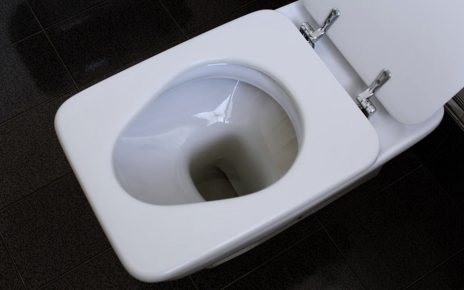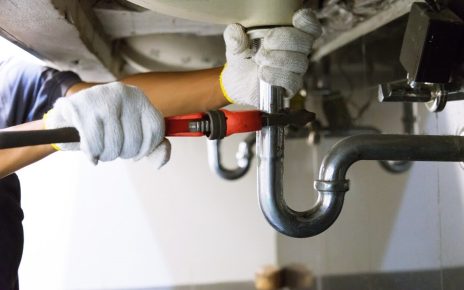Mineral deposits like limescale can build up inside water heaters over time. This is caused by hard water, which contains high amounts of minerals like calcium and magnesium. As the water is heated, these minerals precipitate out and stick to the internal components of the water heater.
Over time, this buildup accumulates and can lead to several problems:
- Reduced efficiency – The mineral deposits act as an insulator, preventing heat transfer and making the water heater work harder. This increases energy costs.
- Noisy operation – Limescale buildup can cause odd noises or sounds as the water heater runs. This is from calcium deposits breaking loose inside the tank.
- Reduced hot water flow – As the mineral deposits accumulate, they restrict water flow through the pipes and components. This leads to decreased water pressure.
- Premature failure – The buildup puts extra strain on the water heater elements and moving components, leading them to wear out faster.
- Tank leaks – Severe mineral accumulation can damage the interior lining of the tank and cause leaks or ruptures.
To prevent these problems, it’s important to periodically descale your water heater. Descaling removes these mineral deposits so your hot water system can run cleanly and efficiently.
Table of Contents
Signs You Need to Descale
Hard water contains dissolved minerals like calcium and magnesium that can build up inside water heaters over time. This buildup, called limescale, can cause several issues that indicate descaling is needed:
- Cloudy/discolored water: As limescale accumulates, it can cause the hot water coming out of your faucets to appear cloudy, white, or discolored. Particles of scale break off and flow through the water lines, affecting the clarity.
- Change in taste/smell: Scale buildup alters the chemical composition of the water, which can give it an unpleasant taste or smell, like sulfur or rotten eggs. This is especially noticeable with drinking water.
- Reduced flow: Scale narrows the interior waterways and pipes in the heater, restricting water flow. You may notice lower water pressure or smaller volumes of hot water being produced.
- Rattling noises: As scale accumulates, chunks can break loose inside the heater and rattle around when water flows. This causes an alarming metallic rattling or banging noise coming from the unit.
- Corrosion: Scale buildup eats away at the metal components of the heater and corrodes the anode rod meant to prevent corrosion. This can cause leaks and other damage over time if left unaddressed.
If you notice any of these warning signs, it’s time to descale your water heater. The longer you wait, the worse buildup will become. Catching it early makes descaling much easier.
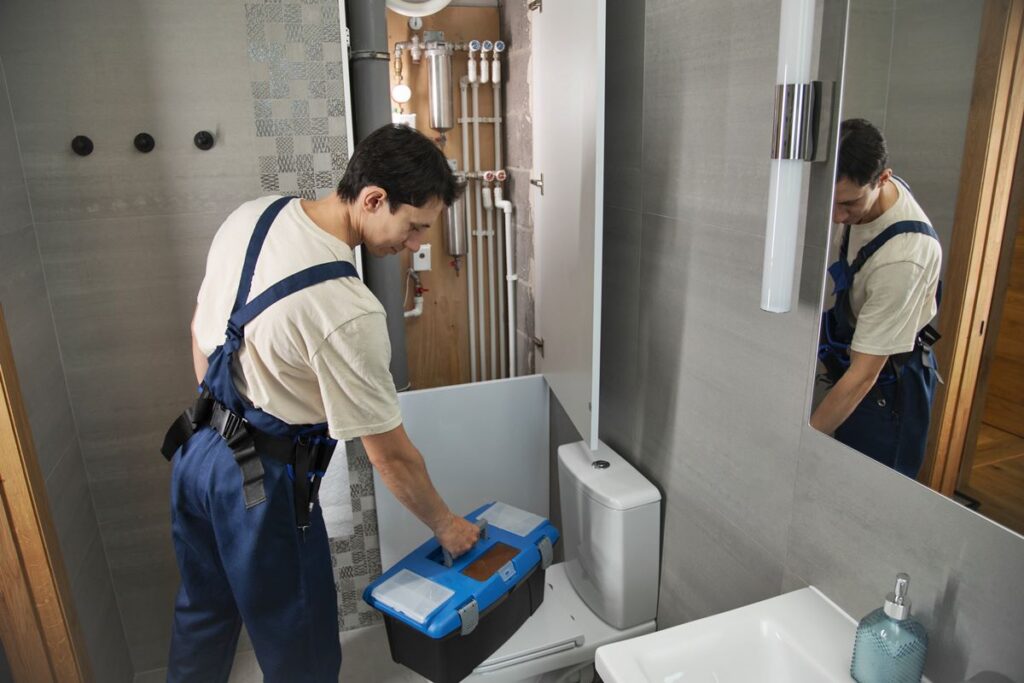
Safety Precautions
Descaling a water heater involves dealing with electricity, hot water, and chemicals, so safety should be your top priority. Here are some key precautions to take:
- Turn off power to the water heater at the breaker box and turn off the gas if applicable. Attempting to descale with the power on risks electrocution.
- Allow the water heater to fully cool before descaling. Hot water tanks can reach up to 150°F internally and attempting to drain or descale while hot risks severe burns.
- Have a large bucket or pan ready to catch water that will drain out when opening the drain valve. This prevents water damage.
- Wear safety goggles to protect your eyes from descaling solutions. Vinegar, citric acid, and chemical descalers can irritate eyes.
- Keep children and pets away from the area while descaling to prevent accidents.
- Read all warning labels on any commercial descaling products and follow instructions carefully. Many contain acidic ingredients that can irritate skin and eyes.
- Ventilate the area if using chemical descalers by opening windows or turning on fans. Some products give off strong fumes.
- Never mix chemical descaling products together as this can create dangerous chemical reactions.
Always put safety first when performing maintenance tasks like descaling a hot water heater. Taking proper precautions will help avoid injuries, damage, or other hazards.
Materials Needed
Descaling your water heater requires just a few simple materials that can likely be found around your home. Here’s what you’ll need:
- White vinegar – Distilled white vinegar is the most commonly used and recommended descaling agent. Use undiluted vinegar.
- Bucket – You’ll need a bucket big enough to hold a few gallons of vinegar. A 5-gallon bucket works well.
- Hose – A garden hose can be used to circulate the vinegar through your water heater. Make sure it’s long enough to reach from your water heater to a drain or outside.
- Eye protection – Wear safety goggles or glasses when working with vinegar, as it can irritate eyes.
- Towels – Have some old towels or rags on hand to soak up any vinegar spills.
- Descaling pump/kit – For tankless water heaters, a descaling pump or kit makes the job much easier. It pumps the vinegar through the system.
The vinegar and bucket are the key ingredients. The hose, eye protection, towels and descaling kit are useful accessories that make the descaling process safer and more effective. With just these simple, inexpensive items, you’ll be ready to get rid of built-up limescale and mineral deposits in your hot water heater.
Descaling a Tank Water Heater
Descaling a tank water heater involves a few key steps:
- Turn off the power to the water heater. Locate the circuit breaker that controls the heater and switch it to the off position.
- Shut off the water supply. There should be shut off valves near the water lines leading to the tank. Turn them clockwise to shut off the water.
- Attach a hose to the drain valve at the bottom of the tank. Make sure the hose extends to an area where hot water can drain safely.
- Open the drain valve and allow all the water to drain out of the tank. This may take 30 minutes or longer to fully drain.
- Close the drain valve once all the water has emptied from the tank.
- Remove the anode rod from the top of the tank. Use the proper socket wrench to unscrew and remove it.
- Pour descaling solution into the tank opening where the anode rod was removed. Use the volume recommended on the descaler product.
- Replace the anode rod. Screw it back into the tank opening to seal it.
- Turn the water supply back on. Allow the tank to fill completely.
- Turn the power back on to the water heater.
- Circulate the descaling solution in the tank for the time specified on the product label. This is usually at least 30 minutes.
- Turn off power to the heater again before draining the tank.
- Drain the tank completely to flush out the descaling solution.
- Refill the tank and resume normal operation. The descaling process is now complete.
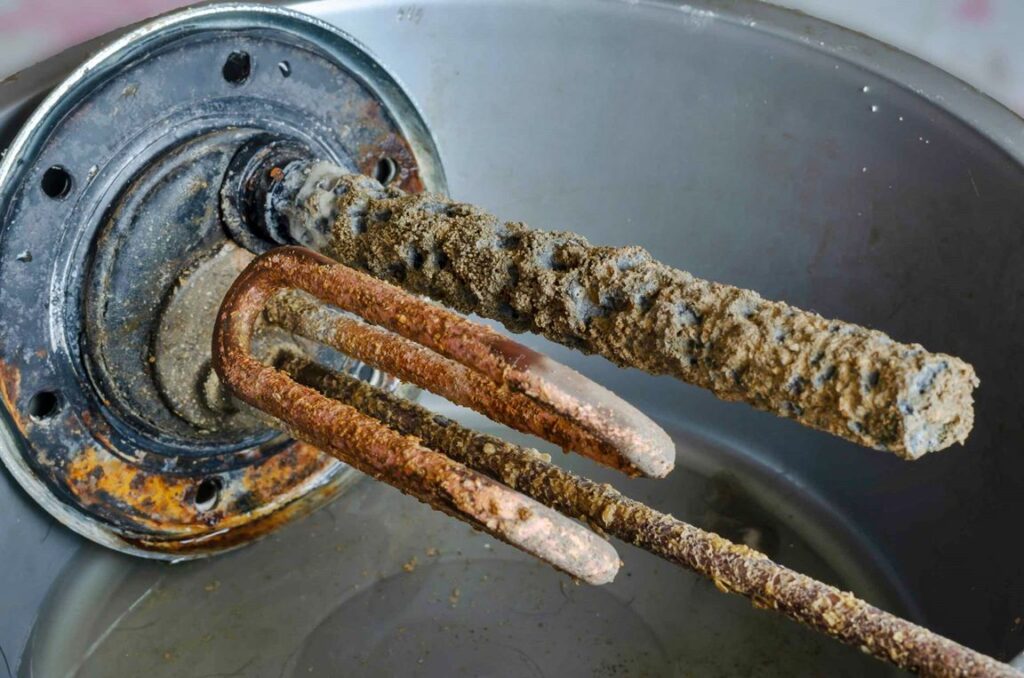
Descaling a Tankless Water Heater
Descaling a tankless water heater requires a few more steps than a tank model but follows the same general process.
The first step is to turn off the water supply and electricity to the unit. Locate the shutoff valve that supplies water to the tankless heater and turn it to the off position. Also, flip the circuit breaker that provides power to the unit.
Next, you’ll need to disconnect the water pipes to and from the tankless heater. Have a bucket ready to catch any water that may spill out when removing the pipes. The inlet and outlet pipes can then be flushed with descaling vinegar to clean out mineral deposits.
After the pipes are disconnected, locate the descaling access port on the tankless unit. This is usually a plastic plug or valve. Remove the access port cover and insert a funnel. Pour descaling vinegar into the funnel until the tank is full. Allow it to sit for at least 30 minutes before draining it out.
Once drained, flush the system by pouring clean water into the funnel to rinse out any remaining vinegar. Remove the funnel and replace the access port cover. Reattach the inlet and outlet pipes to the tankless unit and turn the water supply back on. Check for leaks before restoring power to the heater. It may take a few minutes for the tankless system to run normally again after descaling is complete.

Natural Descaling Methods
One way to descale your water heater without using harsh chemical cleaners is to use natural acids like citric acid or vinegar. These can help dissolve mineral deposits without the use of toxic chemicals.
Citric Acid ????
Citric acid is found naturally in citrus fruits and can be purchased as a powder. To use it to descale your water heater:
- Purchase food-grade citric acid powder. Look for it sold as a canning or brewing supply.
- Mix 1 cup of citric acid powder with 1 gallon of water to create your descaling solution.
- Turn off the cold water supply valve to your water heater and turn on a hot water tap to depressurize the tank.
- Drain about 5 gallons of water from the tank.
- Pour the citric acid solution into the tank and replace the anode rod.
- Allow the solution to circulate through the tank for at least an hour. Flush the tank completely.
- Turn the water supply back on and allow the tank to refill. Flush the hot water lines until the smell of citric acid is gone.
Vinegar ????
Distilled white vinegar can also be used to descale a water heater.
- Mix 1 part vinegar with 1 part water. More dilution is better as concentrated vinegar can damage metal.
- Follow the same steps as above, substituting the vinegar solution for the citric acid.
- Allow vinegar solution to circulate for 2-6 hours before flushing thoroughly.
Lemon Juice ????
Straight lemon juice can also dissolve mineral deposits.
- Allow pure bottled lemon juice to circulate through the tank for several hours.
- Flush thoroughly until all traces of lemon are gone.
Natural descaling methods are gentler but take longer than chemical methods. Check your owner’s manual for procedure specifics.
Preventing Buildup
You can take steps to prevent mineral buildup in your water heater, reducing the need for descaling. Here are some tips:
Install a Water Softener
Hard water is the main cause of mineral deposits in water heaters. A water softener removes minerals like calcium and magnesium from the water before it enters your home’s plumbing. This keeps the water soft and prevents scale buildup.
Use Filtration
Special filters can remove minerals from your water before they get to the water heater. This is another way to keep hard minerals from accumulating. Look for scale prevention water filters made specifically for water heaters.
Descale Regularly
Even with softened water, some buildup can occur over time. Get in the habit of descaling your water heater once a year as preventative maintenance. This minor scale is easier to remove before major buildup occurs.
Check the Anode Rod
The anode rod in your water heater attracts corrosive elements in the water away from the tank. Check this routinely and replace it if it’s worn down. Quality anode rods last longer and protect your tank.
Taking these proactive steps can minimize scale and corrosion in your water heater. Be diligent about water treatment and maintenance to extend the life of your equipment.
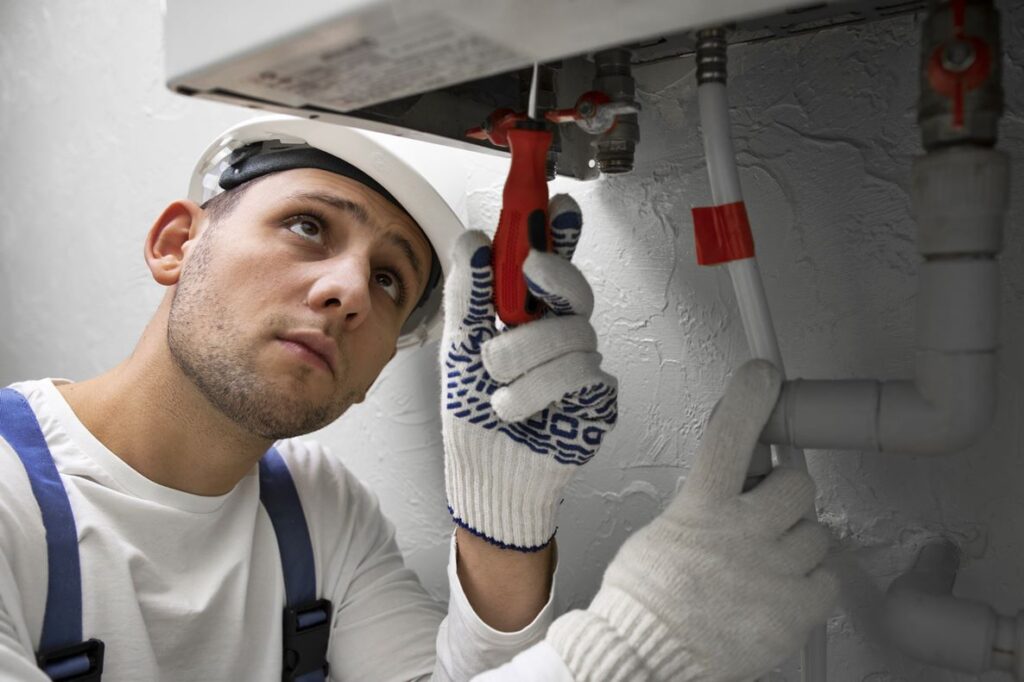
When to Call a Professional
For severe mineral buildup, it’s best to call a professional to descale your water heater. Signs of severe buildup include rumbling noises coming from the tank, a strong sulfur smell from hot water, and significant decreases in hot water pressure.
Professionals have industrial-strength descaling solutions and tools to thoroughly clean out heavy lime and calcium deposits. They can also fully flush out the tank after descaling to remove all loose sediment.
If you have an electric water heater, it’s also advisable to call a professional. The heating elements are very delicate and can easily be damaged if descaling chemicals or tools come in contact with them. A pro will know how to properly protect the elements during the descaling process.
Finally, if you’re unfamiliar with how to safely descale a water heater, it’s better to call an expert rather than risking damage by attempting it yourself. Proper descaling requires carefully following safety precautions and using the right equipment. A professional will have the knowledge and skills to descale your heater safely and effectively.
Calling a plumber or water heater technician for descaling may seem expensive, but it can save you money in the long run by extending the life of your water heater. You’ll also have peace of mind knowing the job was done properly.
Descale Water Heater Conclusion
Descaling your water heater is an important maintenance task that should not be overlooked. Hard water mineral deposits can build up inside the tank or heating coils over time, reducing efficiency and leading to premature failure. By descaling regularly, you can extend the life of your water heater and ensure it continues working properly.
This article covered the signs that descaling is needed, safety precautions to take, materials required, and step-by-step instructions for descaling both tank and tankless water heaters. While chemical descalers are commonly used, natural methods like vinegar or citric acid can also be effective for cleaning out mineral deposits.
To prevent excessive buildup, consider installing a water softener if you have hard water, and flush your water heater per the manufacturer’s recommendations. However, some mineral accumulation is inevitable over years of use. Descaling your heater every 6-12 months helps remove this buildup before it causes issues.
If your water heater is over 10 years old and heavily calcified, or you encounter problems during descaling, it may be time to have a professional inspect and service the unit. They can determine if replacement is needed. Otherwise, periodic descaling lets you keep your existing water heater running efficiently for years to come.



